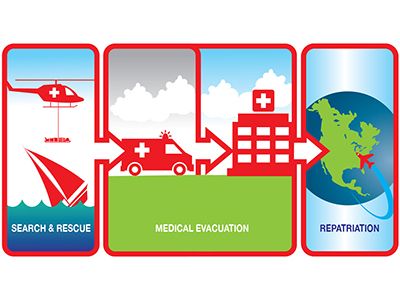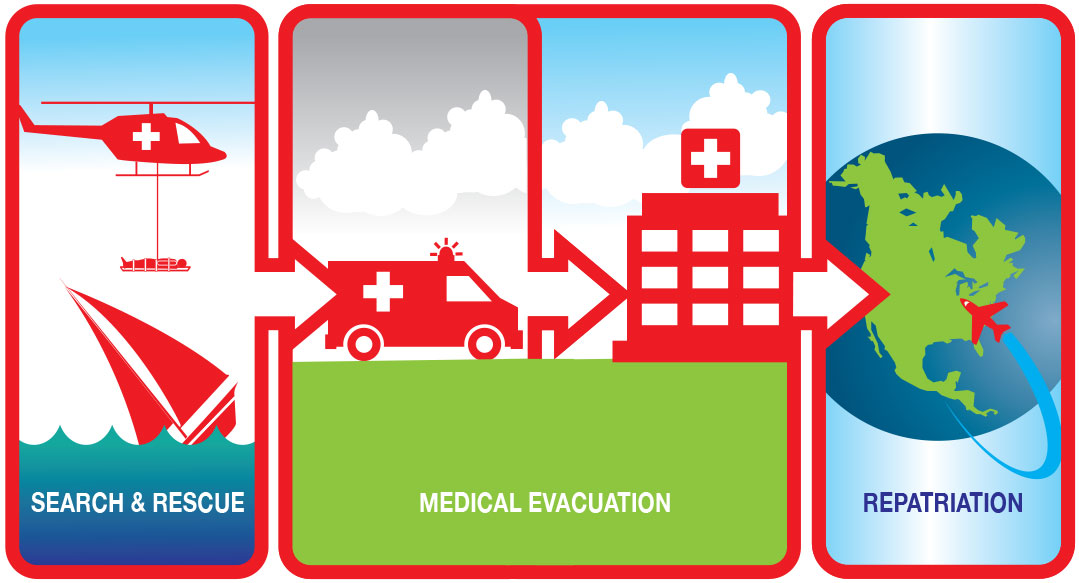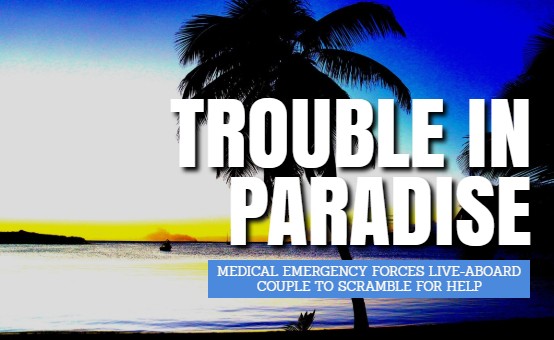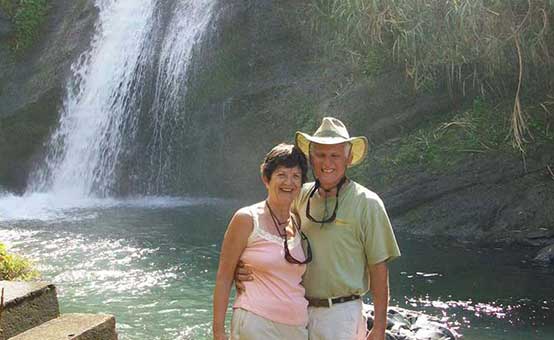

Want to know the secret to the most enjoyable and safe travels ever?
Being prepared.
And when you and your family members are traveling the world by boat, the key to good preparation is having a realistic emergency action plan in place to handle any unexpected sea dragons you may encounter along the way.
That’s why as part of your preparations for getting underway, it’s important to familiarize yourself with the details and availability of three specific emergency resources at your destination and along your planned route:
1. Search and Rescue
2. Medical Evacuation
3. Medical Repatriation
One of life’s little ironies is that although sailors and cruisers universally agree that these services are a vital part of a good emergency action plan, misconceptions about what to expect when you have to use these services can often make an emergency situation even more stressful than it already is.
The fact is these life-line services are designed to address very specific types of emergencies and although they sometimes overlap -- depending on the circumstances -- they are not interchangeable. Understanding who and when to call, and what to expect when you do, could make a world of difference during and after your emergency.
Search and rescue (or SAR) is the search for and provision of aid to people who are lost, in distress, or in imminent danger on land or sea. Specially-trained teams of search and first-responder professionals plan and perform these operations using a variety of equipment suited to the terrain including aircraft, surface craft, and submarines. (See USLegal.com and Wikipedia.)
Medical Evacuation (or MedEvac) is the transportation of a person experiencing a medical emergency to the closest available medical facility as quickly and safely as possible. Medical evacuations are usually conducted by specially-trained first-responders or medical personnel. Depending on the individual's current location and medical condition, the terrain being covered, and the proximity to health care facilities, transportation may be provided using one or a combination of methods including boats, helicopters, planes, automobiles, and animal conveyance.
Medical repatriation refers to when a patient is returned home to receive medical care. The primary difference between medical repatriation and medical evacuation is where the patient is taken. In a medical evacuation situation, which is usually a medical emergency, the patient is transported to the closest medical facility for stabilization, diagnosis and emergency care. Depending on the location and capabilities of the facility, however, it may or may not be the best choice for ongoing medical treatment. In that case, once the patient's condition has stabilized and he or she has been cleared by the medical professionals for travel home, medical repatration transports the patient to his or her home country for a higher, or more appropriate, level of primary or follow-up care.
At DAN Boater, we handle thousands of emergency hotline calls from all over the world each year, and an average of two medical evacuations a week, so we know first-hand how important it is to have these essential emergency services in place before you ever need them. If you're planning a trip, give us a call for tips on handling emergencies while en route to your destination.
Learn more about DAN Boater Membership and how our medical evacuation, repatriation and search and rescue expense benefits can help you and your family, wherever you travel.
MORE FROM
SAFE PASSAGE

MEMBER STORIES | Nov 16, 2018
Trouble in Paradise: Medical Emergency Forces Liveaboard Couple to Scramble for Help

MEMBER STORIES | Aug 11, 2016
Emergency MedEvac From Guatemala Has A Happy Ending